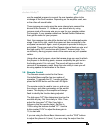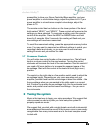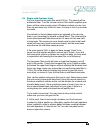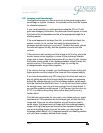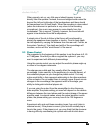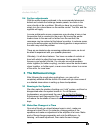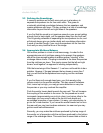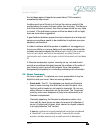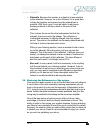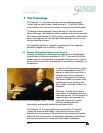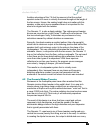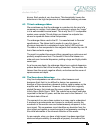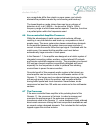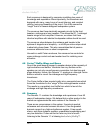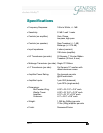
Ver 2.0
25
2525
25
~ÄëçäìíÉ=ÑáÇÉäáíó
are a magnitude stiffer than plastic or paper cones, and virtually
eliminate the problems caused by cone bending and break-up.
The lowest break-up mode (where there can be any chance of
distortion at all), is at 3,600Hz – far above the 16Hz to 140Hz
frequency range at which these woofers operate. Therefore, the driver
is a perfect piston within the frequencies used.
4.6 Servo-controlled Amplifier/Crossover
While the advantages of metal cones include extreme stiffness
resulting in very low distortion and break-up, one problem is that of
greater mass. The servo system also places extraordinary demands
on the amplifier because the system uses enormous amounts of
current to make the woofer follow the input signal. Combined with the
metal cones, this means that the amplifier used must deliver
extraordinarily large amounts of clean power.
In the Genesis 1.1, the amplifier was designed as a holistic system of
integrated connecting cables, woofers, custom tailored EQ network
and remote controlled crossover circuitry. The proprietary six-channel
500 watt per channel amplifier is specifically designed and tuned
especially for low frequencies in order to produce floor-shaking,
musical bass to power the servo woofers.
One side benefit of this powered woofer system is that almost any
sized amplifier can be used to drive the mid/tweeter section of the
Genesis 1.1. No longer must one choose between having an amplifier
with enough power to drive the woofers, and a smaller amplifier
having better spatial and tonal characters. Nevertheless, we do
recommend no less than 100 watts as a minimum for the mid/tweeter
sections.
4.7 The Crossover
If the servo-controlled bass amplifier is the pulsating heart of the
Genesis 1.1, the crossover is the brain. In order to manage and
maximize the performance of the extensive complement of
transducers used in the Genesis 1.1, we’ve designed a hand soldered
direct wired crossover utilizing the finest components available as well
as several custom designed elements. This includes the first multiple-
tapped copper film air-core inductor.



